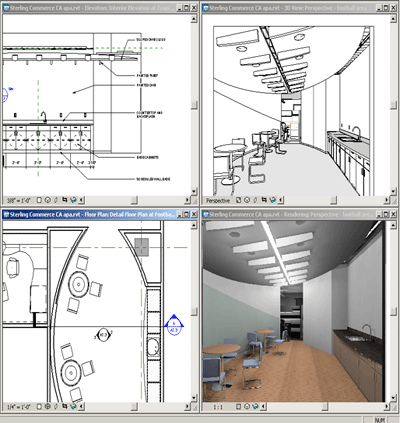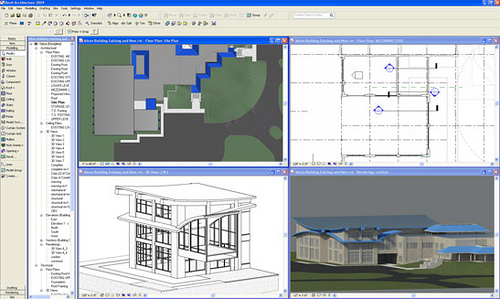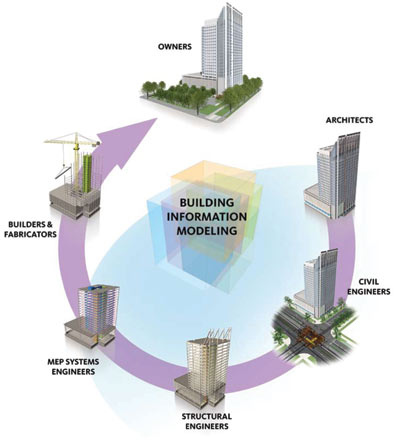
What is BIM?
BIM (Building Information Modeling) is the creation of parametric, or intelligent, 3D models instead of 2D perspective ‘un-intelligent’ drawings. A BIM operates on a digital database and any change made to this database is reflected throughout the entire drawing. This allows everyone involved in the building design lifecycle – architects, engineers, contractors, developers, and building owners – to sync together allowing them to view the model in different ways and seamlessly share information.
Building Information Modeling (BIM) is one of the most promising developments in the architecture, engineering and construction industries. With BIM technology, an accurate virtual model of a building is constructed digitally. When completed, the computer-generated model contains precise geometry and relevant data needed to support the construction, fabrication, and procurement activities needed to realize the building.

Building Information Modeling (BIM) was introduced nearly ten years ago to distinguish the information rich architectural 3D modeling from the traditional 2D drawing. BIM is a building design methodology characterized by the creation and use of coordinated, internally consistent computable information about a building project in design and construction.

BIM effectively combines 3D geometry, spatial relationships, geographic information, material quantities and attributes of building components. When integrated, this data to demonstrates the entire building lifecycle, including the various processes of construction and facility operation.
BIM has been promoted as the solution to reduce waste and inefficiency in building design and construction. However, many organizations have taken a wait-and-see attitude about BIM, looking for evidence for return on investment it entails. Today, it’s hard to peruse a professional journal without reading about Building Information Modeling, and software vendors and consultants continue to promote it as the answer for improving efficiency of the entire construction industry.
